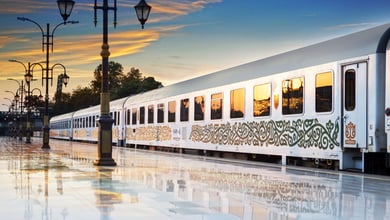Tehran Travel Guide: Top Sights & Tips + Photos
A Guide to Adventure, Culture, and Leisure

Explore Tehran, the heart of Iran, through our detailed Tehran Travel Guide. This city, a fascinating amalgamation of modern advancements and rich historical tapestries, showcases everything from soaring skyscrapers to ancient palaces. Dive into Tehran’s cultural depth, savor the flavors of Persian cuisine, and wander the lively bazaars.
Our guide offers insights into creating an unforgettable experience, highlighting must-visit sites, lesser-known treasures, and essential travel tips. Tehran caters to both history buffs and those seeking the pulse of city life, guaranteeing an impactful journey.
Tehran’s history stretches back over 6,000 years, with its strategic location in north-central Iran playing a pivotal role in its cultural and historical development. Initial settlements date to the Bronze Age, but Tehran rose to prominence in the 9th century as a vital hub on the Silk Road.
The 20th century marked a period of significant transformation under the Pahlavi dynasty, leading to rapid modernization and Tehran’s evolution into the epicenter of Iran’s advancement.
Now, with a population exceeding 10 million, Tehran stands as a bustling metropolis that embodies Iran’s political, economic, and cultural dynamism. It invites global visitors to explore its unique heritage and lively contemporary scene.
Contents
How is the Weather in Tehran?

Tehran experiences a semi-arid climate with four distinct seasons, which makes it a year-round destination depending on what you’re looking for.
Summers are hot and dry, with daytime temperatures ranging from 30°C (86°F) to 40°C (104°F). Nighttime temperatures can be more comfortable but still quite warm. Autumn offers mild and pleasant weather, ideal for outdoor activities. Daytime temperatures range from 15°C (59°F) to 25°C (77°F).
Winters are cold, especially at night. Snowfall is not uncommon, and temperatures can drop below freezing. This season attracts skiers to the nearby mountain resorts.
Spring is arguably the best time to visit, with mild temperatures, blooming flowers, and plenty of sunshine. Daytime temperatures can vary from 10°C (50°F) to 20°C (68°F).
Discover the ideal times for your visit to Tehran:
| Month | Weather/Climate | Events/Notes |
|---|---|---|
| January | ❄️ Cold | 🎿 Ideal for winter sports enthusiasts |
| February | ❄️ Cold to mild | 🎭 Fajr International Theater Festival |
| March | 🌼 Mild, Spring begins | 🎉 Nowruz (Iranian New Year) celebrations |
| April | 🌸 Pleasant Spring | 🌷 Tulip Festival |
| May | 🌤 Warm | 🌺 Ideal for exploring parks and gardens |
| June | ☀️ Hot | 🍹 Good for indoor museums and café hopping |
| July | ☀️ Very hot | 🌜 Pleasant evenings for night-time city tours |
| August | ☀️ Very hot | 🌜 Enjoy cooler nights, cultural events |
| September | 🍂 Warm, Autumn begins | 🏞 Perfect for hiking in nearby mountains |
| October | 🍁 Pleasant Autumn | 🍇 Harvest festivals, beautiful autumn colors |
| November | 🌬 Mild to cool | 🎨 Tehran Contemporary Art Fair |
| December | ❄️ Cold | 🍲 Enjoy traditional Iranian winter cuisine |

Get Around Tehran
Getting around traffic-clogged, sprawling Tehran is a true test of patience. While taxis are your best bet, they are pricier here than the rest of the country.
A large local bus network will also take you almost anywhere you need to go, as long you can make sense of the routes and Persian line numbers.
The true star of Tehran’s transport system however, is the brand new metro.
Tehran Bus
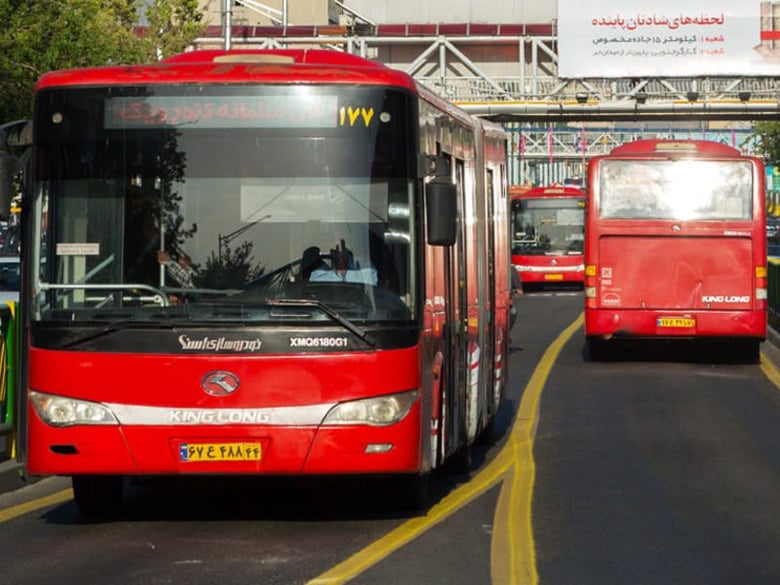
The buses in the Tehran are quite efficient in Iran and it is by far the most preferred transport for women, who deem it safer than taxis. Buses operate throughout the city but timetables and routes are not readily available.
Bus stops, in particular along Vali Asr Street, are clearly marked and numerous. Otherwise, you can ask a passerby for the nearest stop.
Day services are frequent, but in the evenings (some buses do not run after 21.30) and on Fridays these are more sporadic.
Always buy a ticket either at the kiosk or from the driver himself, paying at the end of the journey.
Female travellers may need to exit the bus and then come up to the driver at the front to pay for the ticket (around 3,000 rials).
Tehran BRT Bus
The Tehran Bus Rapid Transit (BRT) is a rapid transit system serving Tehran which was officially inaugurated in 2008. The BRT has a network of over 150 kilometres, transporting 1.8 million passengers on a daily basis.
The BRT has a total of ten lines with a further expansion planned to bring the total length to 300 kilometres. In 2023, the fare for regular and express buses has been set at 1,800 Iranian Rials (IRR) for the first 2.5 kilometers. For every additional 2.5 kilometers, an extra 400 Iranian Rials (IRR) will be charged.
BRT tickets in Tehran are offered as prepaid, rechargeable cards and are integrated with the Tehran Metro system. To purchase one of these electronic, credit-based tickets, you can go to the ticket sales booths located at metro stations.
Recharging your BRT ticket is quite easy. Simply visit the designated booths in the metro stations to reload your card.
Given that these booths can often be crowded, it’s recommended to use the machines installed in metro stations for this purpose.
These machines allow you to recharge your ticket using a bank credit card. Additionally, there are machines at the entrances of BRT stations for recharging your ticket as well.
Tehran Metro
The first line of the Tehran metro opened in February 2000. There are now five lines in operation connecting the far-flung parts of this huge city. One-way and return ticket costs are 3,500 rials and 5,500 rials respectively, regardless of the distance.
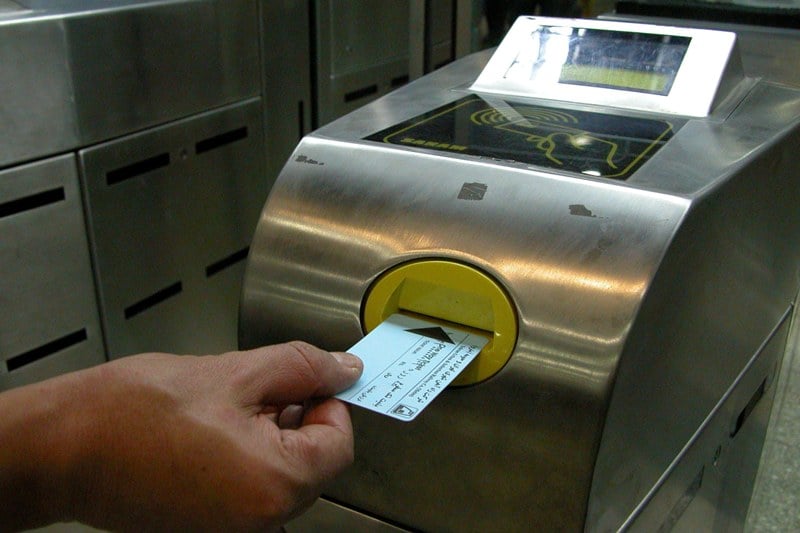
Travel passes are the cheapest way to use the metro and useful if you plan to use trains regularly.
Like the Oyster card on the UK London underground, you purchase a card at the ticket office and charge the card with funds and swipe in and out of the barriers at the stations. Rush hours, best avoided, are from 06.00 to 09.00 and 1/1.00 to 17.00.
Metro carriages are also gender-segregated, but metro travel is safe and efficient and indications are written in both Persian and clear English.
While metro services are not as frequent as in European cities, the carriages are clean and you can always purchase a little something from one of the sellers along the way.
See and download a Map of the Tehran Metro (PDF) below.
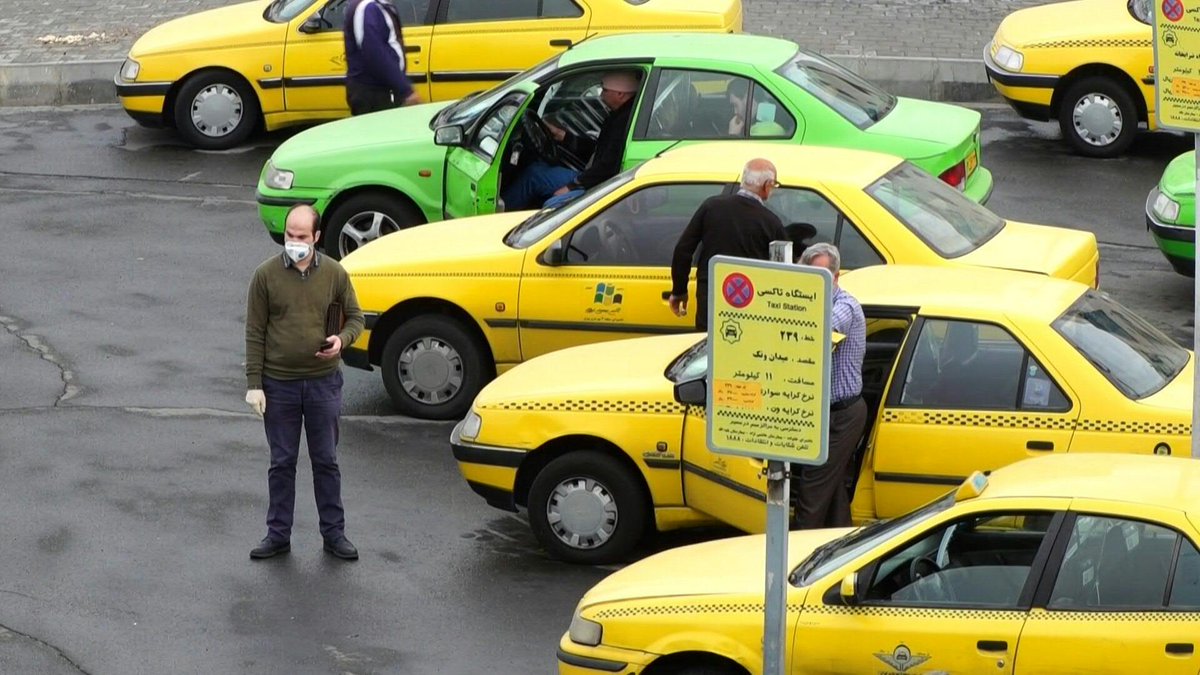
Tehran Taxi
Traveling by taxi in Tehran is easy and inexpensive. A shared taxi (savari) costs around 5,000—10,000 rials and private hire (darbast) costs up to 80,000 rials, depending on where you are going.
Do remember that Tehran is not a pedestrian-friendly city and a short savari ride up Valiasr Street may save a great deal of energy.
Rideshare Apps in Tehran
It is recommended for traveler to use the ride-sharing apps such as SNAPP or TAP30 since they are cheaper than the regular taxi most of the time.
Getting to Know Tehran’s Airports

One of the first modes of transportation you’ll likely encounter in this Tehran travel guide is air travel. The city boasts two airports: Imam Khomeini International Airport, which primarily serves international flights, and Mehrabad Airport, generally used for domestic travel.
Imam Khomeini International Airport
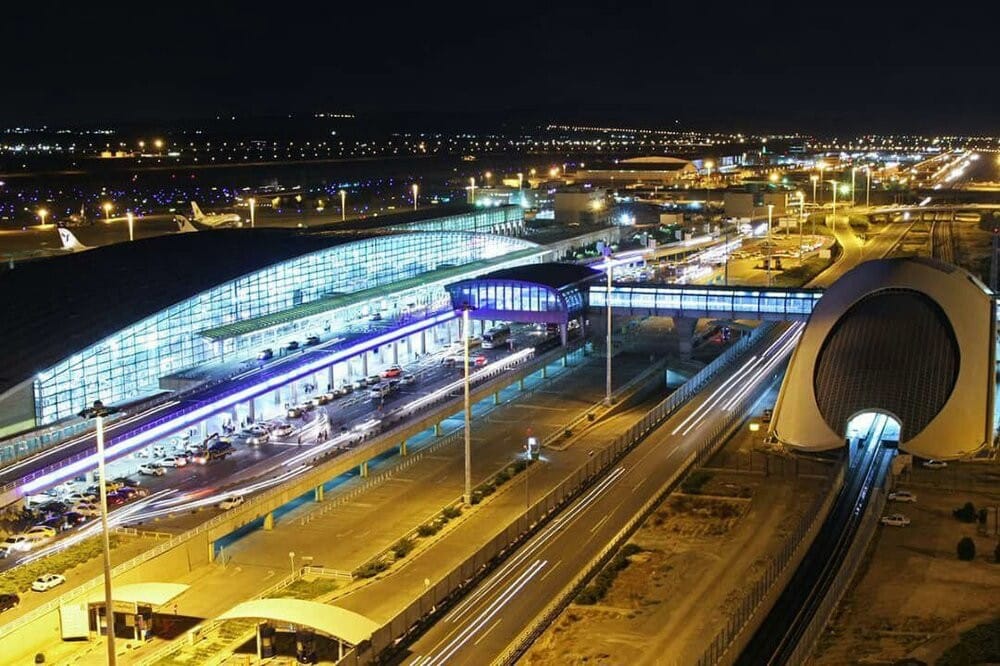
Tehran’s Imam Khomeini International Airport (IKA) is located roughly 30 kilometers southwest of the city center. The duration it takes to travel from various parts of Tehran to IKA can vary greatly depending on the mode of transport, traffic conditions, and the specific location in Tehran from which one is departing.
The distance between Imam Khomeini Airport and some important places
IKA to Azadi Stadium (West Tehran)
By car: Approximately 45 minutes to 1 hour, but can be longer during peak traffic times.
By public transport: There isn’t a direct public transport line from Azadi Stadium to IKA. One would typically need to take a combination of metro and then a shuttle or taxi. This can take upwards of 1.5 to 2 hours, depending on wait times and connections.
IKA to Tehran City Theater (Central Tehran)
By car: Roughly 1 to 1.5 hours, depending on traffic.
By public transport: Similar to the route from Azadi Stadium, there isn’t a direct line. The journey will likely involve a combination of metro and other forms of transport, taking around 1.5 to 2 hours.
IKA to Lavizan Forest Park (North Tehran)
By car: Around 1 to 1.5 hours.
By public transport: Again, the journey would likely involve multiple modes of transport and can take around 2 hours or more.
IKA to Milad Tower (North-central Tehran)
By car: Approximately 1 to 1.5 hours.
By public transport: There isn’t a direct public transport line from Milad Tower to IKA. As with the other locations, one would need a combination of metro and then a shuttle or taxi. This can take around 1.5 to 2 hours.
IKA to Espinas Palace Hotel (Northwest Tehran)
By car: Around 1 to 1.5 hours.
By public transport: There isn’t a direct line from Espinas Palace to IKA. One would likely need a combination of the metro and then a shuttle or taxi. This can take around 1.5 to 2 hours.
IKA to Parsian Esteghlal Hotel (North Tehran)
By car: Approximately 1 to 1.5 hours.
By public transport: Similarly, there isn’t a direct line from Parsian Esteghlal to IKA. The journey would likely involve a metro and then a transfer to a shuttle or taxi, taking around 1.5 to 2 hours.
IKA to Ferdowsi Hotel (Central Tehran)
By car: Roughly 1 to 1.5 hours, depending on traffic conditions.
By public transport: As with most locations in central Tehran, there isn’t a direct line to IKA. One would need a combination of metro and other forms of transport, taking approximately 1.5 to 2 hours.
IKA to Qom City Center
By car: Qom is located about 125 km south of Tehran. The drive from Qom city center to IKA is around 1.5 to 2 hours, depending on traffic and the specific route taken.
By public transport: There’s no direct public transport route from Qom to IKA. One would typically need to take a bus or train to Tehran and then transfer to another mode of transport to reach IKA. The total journey could take 3 hours or more, depending on wait times and connections.
Mehrabad International Airport
Built in 1938, Mehrabad International Airport was Tehran’s primary airport for both domestic and international flights. Although its role for international flights has diminished with the advent of Imam Khomeini International Airport, Mehrabad continues to be a crucial facility for domestic travel within Iran.
Whether you are arriving from abroad or traveling within the country, both airports offer a range of services and amenities to facilitate your journey.
Distance and Travel Time from Mehrabad International Airport to Tehran City Center:
The distance is roughly 10 to 12 kilometers, depending on the specific destination in the city center.
- By Car:
- Without traffic: Approximately 20-30 minutes.
- With traffic (especially during peak hours): It can take 40 minutes to over an hour.
- By Public Transport: There’s a metro station (Mehrabad Airport Station) on Line 4 of Tehran’s metro system which connects the airport to the city center. Using the metro, it can take approximately 30-40 minutes to reach the city center. However, considering potential waiting times for the next train, the total journey could be a bit longer.
Tehran Train Station

Constructed in 1927, the Tehran Railway Station stands as a key hub for various forms of travel. Easily accessible by metro and bus, it offers a convenient option for getting around the country.
Routes and Distances
The station serves as a junction for numerous routes that connect Tehran to other major cities. Key routes include Tehran to Mashhad, Tehran to Ahvaz, Tehran to Tabriz, and Tehran to Bandar Abbas. These cities are the terminal points, but the trains also make stops at various cities along these routes.
Proximity to Airports
Situated about 13 km from Mehrabad Airport and approximately 45 km from Imam Khomeini International Airport, the station is conveniently located for those looking to transition between air and rail travel.
Ticketing
Iran Train tickets can easily be purchased through the OrientTrips website, making it simple for travelers to plan their journeys.
Whether you’re exploring the city or venturing out to other parts of Iran, Tehran Railway Station provides a convenient and efficient travel solution.
Tehran Bus Terminals
1. Azadi Terminal (West Tehran)

Azadi Terminal, one of Tehran’s largest and busiest terminals, opened its doors in 1996. Since then, it has been the launching pad for travelers venturing from Tehran to various corners of Iran. While the second floor houses administrative offices, the first floor is where you can purchase bus tickets to cities like Ilam, Rasht, Kermanshah, Ardebil, Saveh, Shiraz, Mashhad, Sanandaj, Yazd, and even international destinations like Istanbul, Batumi, Tbilisi, and Ankara.
Location: Azadi Terminal on Google Maps
2. Tehranpars Terminal (East Tehran)

Tehranpars Terminal, founded in 1981, is another major transportation hub in Tehran. Since its establishment, it has served as a departure and arrival point for travelers heading to cities such as Mashhad, Gorgan, Isfahan, Qom, Babol, Arak, Semnan, Amol, Gorgan, Babol, and more.
Location: Tehranpars Terminal on Google Maps
3. Khazaneh Terminal (South Tehran)
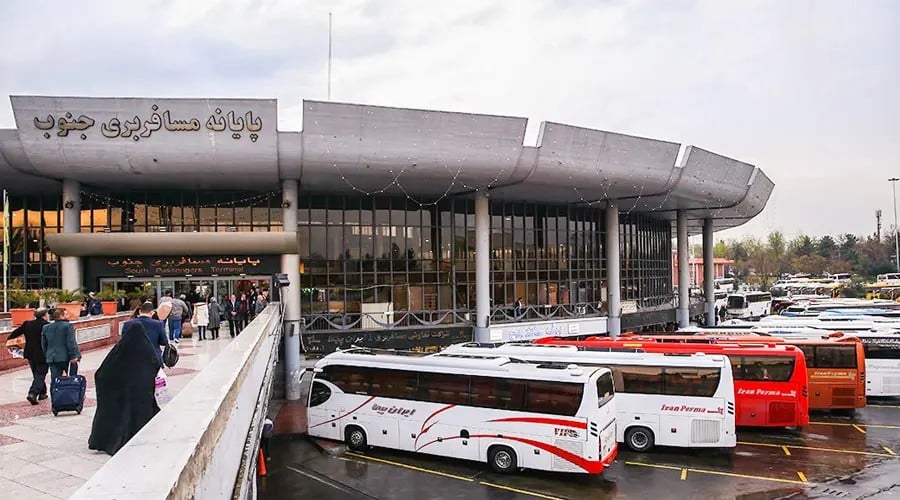
Khazaneh Terminal, the oldest of Tehran’s terminals, has been in operation since 1974. It consistently welcomes passengers traveling from southern cities of Iran, including Bushehr, Abadan, Isfahan, Khorramabad, Dezful, Shiraz, Shushtar, Hamedan, Yasuj, Shahroud, Asaluyeh, Arak, Semnan, Ardebil, Andimeshk, Ahvaz, and even offers routes to Turkey and Syria.
Location: Khazaneh Terminal on Google Maps
4. Beyhaghi Terminal (Argentin Square)

Beyhaghi Terminal, situated at Argentin Square, commenced operations in 1991. Travelers from this terminal can obtain bus tickets to cities like Rasht, Shahr-e Kord, Hamedan, Yazd, Chalus, Shabestar, Urmia, and Ahvaz, among others. It continues to facilitate travel to these destinations.
Location: Beyhaghi Terminal on Google Maps
5. Poonak Terminal

Last but not least is Poonak Terminal, named after its location in the Poonak neighborhood. This terminal is home to various travel agencies, making it a convenient choice for those planning trips to northern Iran. While waiting for your journey, you can relax in the terminal’s waiting area.
Location: Poonak Terminal on Google Maps
These five terminals serve as vital connections for travelers exploring Iran’s diverse regions. Whether you’re seeking the historic charm of Isfahan, the lush greenery of Gilan, or the ancient wonders of Shiraz, these terminals will get you on your way. So, pack your bags, plan your adventure, and let Tehran’s terminals be your starting point for an unforgettable journey through Iran.
For more information about traveling in Tehran and throughout Iran, explore our SURFIRAN website for the latest updates and travel tips.
Getting to Tehran
Tehran, the bustling capital of Iran, brims with activity and offers diverse experiences for travelers. The city’s sheer size and traffic congestion pose a challenge, but this guide aims to equip you with various travel tips for a hassle-free journey.
Traveling to Tehran by Air
Traveling to Tehran by air is often the first option many consider. This method delivers both speed and convenience for reaching the city. Tehran is served by two major international airports: Imam Khomeini International Airport and Mehrabad Airport. For those closer to Tehran or in neighboring provinces, other transportation options could be preferable and more cost-effective.
Here are some estimated flight times to Tehran from different cities:
- Tabriz to Tehran: Approximately 1 hour
- Isfahan to Tehran: Approximately 1 hour
- Shiraz to Tehran: Approximately 1 hour and 30 minutes
- Mashhad to Tehran: Approximately 1 hour and 30 minutes
- Bandar Abbas to Tehran: Approximately 1 hour and 45 minutes
Traveling to Tehran by Train
Traveling by train is an enjoyable way to experience the journey to Tehran. The central train station in Tehran, known as “Tehran Railway Station,” serves as a hub for rail travel to and from the city.
Estimated train travel times to Tehran from different cities:
- Isfahan to Tehran: Approximately 8 to 9 hours
- Mashhad to Tehran: Approximately 10 to 12 hours
- Tabriz to Tehran: Approximately 12 hours
- Shiraz to Tehran: Approximately 15 to 16 hours
- Bandar Abbas to Tehran: Approximately 18 to 20 hours

Traveling to Tehran by Bus

For those seeking a more budget-friendly option, traveling to Tehran by bus is a convenient choice. Tehran boasts several major bus terminals, offering connections to various destinations across Iran.
Here are estimated travel times by bus to Tehran from different cities:
- Isfahan to Tehran: Approximately 4 hours and 50 minutes to 5 hours
- Tabriz to Tehran: Approximately 7 to 8 hours
- Shiraz to Tehran: Approximately 10 to 11 hours
- Mashhad to Tehran: Approximately 11 to 12 hours
- Bandar Abbas to Tehran: Approximately 14 to 15 hours
Traveling to Tehran by Personal Vehicle
For ultimate flexibility and convenience, many travelers opt for the freedom of traveling to Tehran by personal vehicle. All you need to do is hop in your car and hit the road, allowing you to explore at your own pace.
Here are estimated travel times by personal vehicle to Tehran from different cities:
- Isfahan to Tehran: Approximately 4 hours and 50 minutes to 5 hours
- Tabriz to Tehran: Approximately 7 to 8 hours
- Shiraz to Tehran: Approximately 10 to 11 hours
- Mashhad to Tehran: Approximately 11 to 12 hours
- Bandar Abbas to Tehran: Approximately 14 to 15 hours
Please note that these travel times are approximate and may vary depending on factors such as road conditions and traffic. Regardless of your chosen mode of transportation, Tehran promises an exciting and diverse array of experiences for travelers eager to explore its vibrant culture and history.
- Google Maps Location for Tehran Railway Station
- Google Maps Location for Imam Khomeini International Airport
- Google Maps Location for Mehrabad Airport
What To See In Tehran
When planning a trip to Tehran, expect an enriching blend of history, culture, and modernity. Be sure to include these standout locations in your itinerary.
The National Jewelry Treasury
Home to the world’s largest collection of jewels, the National Jewelry Treasury is a spectacle not to be missed. Among its glittering exhibits are the Darya-e-Noor diamond—which is considered the sister diamond to the Kuh-e-Noor—and the world’s largest uncut ruby. You’ll also find a freestanding golden globe that boasts 34 kilograms of gold and a staggering 51,366 precious stones.
Tabiat Bridge
Also known as the Nature Bridge, Tabiat Bridge features a steel-tree design that lives up to its name. Flanked by lovely parks on both sides, the bridge offers sweeping views, delightful restaurants, tea houses, and even an ice cream parlor. It’s a great spot for a leisurely stroll and some people-watching.
Golestan Palace
This opulent World Heritage Site was built during the Qajar Dynasty in the late 1700s. The complex is centered around a meticulously landscaped garden complete with tranquil pools. What you see today mostly dates back to the 19th century, representing a fascinating blend of traditional Persian architecture and Western and Russian influences. The palace structures are among Tehran’s oldest and are often cited as masterpieces of the Qajar era.
The National Museum of Iran

A treasure trove of history, the National Museum of Iran offers an expansive collection that includes ceramics, stone figures, and carvings dating back to the 5th millennium BC. Many of these artifacts were excavated from historical sites such as Persepolis, Shush, Ray, and Turang Tappé, making them even more intriguing if you visit the museum after exploring these archaeological sites.
The Glass & Ceramics Museum
Not just for its carefully curated exhibits but also for the architectural beauty of the building itself, the Glass & Ceramics Museum is one of Tehran’s standout museums.
BOOK ONLINE
Tehran Hotels
The Reza Abbasi Museum
A captivating cultural hub, the Reza Abbasi Museum showcases Islamic painting, pottery, and jewelry. The complex also includes the National Palace Museum, formerly the residence of the last Shah, and now housing an array of museums.
Sa’ad Abad Palace

This palace once hosted the coronations and weddings of the Pahlavi Dynasty and was the residence from which the last Shah fled following the Islamic Revolution in 1979. Now a museum, its vast collection includes period furniture, decor, and even personal items that belonged to the last Shah.
Milad Tower
Also known as Tehran Tower, this multi-purpose structure is the sixth-tallest tower and the 17th-tallest freestanding structure in the world. Its height and design make it a modern marvel in the Tehran skyline.

Quick Facts About Milad Tower
- Height: 435 meters (1,427 ft)
- Completion Date: 2007
- Location: Between the Shahrak-e Gharb and Gisha districts of Tehran
- Function: Multipurpose – Observation, Telecommunication, Restaurant, Museum, and more.
- Tips for Visitors
- Best Time to Visit: Late afternoon to evening, so you can catch both the daylight and nighttime views of the city.
- Dress Code: While Iran has a dress code for women (headscarf and modest clothing), the atmosphere in tourist places like Milad Tower is relatively relaxed. Still, it’s essential to respect local customs.
- Tickets: It’s recommended to buy tickets in advance, especially during peak seasons, to avoid long queues.
- Accessibility: The tower is wheelchair accessible.
Azadi Tower
A symbol of Tehran for many years, Azadi Tower was erected to celebrate the 2,500th anniversary of the Persian Empire. It blends elements of Sassanid and Islamic architecture, creating a unique and timeless landmark.
Whether you’re a history buff, an art enthusiast, or simply looking to experience the best of Iranian culture, Tehran has something for everyone.

Some quick fact about Azadi Tower
Height: About 50 meters (164 feet)
Architectural Competition: The design of the Azadi Tower was chosen from among 700 submitted designs during a competition. Hossein Amanat’s winning design stood out for its fusion of traditional Persian and modern architectural elements.
Cultural Fusion: The tower’s architecture is a blend of both traditional Iranian styles and the modern architectural techniques of the 1960s and 70s. This duality symbolizes Iran’s ancient history and its push towards modernity.
Inside the Arch: The arch is hollow, and visitors can ascend inside to the top to witness a panoramic view of Tehran.
Tower Dimensions: The base of the tower is about 45,000 square feet, and the main vault has a height of about 36 meters.
A Monumental Occasion: The tower was inaugurated in October 1971 in commemoration of the 2,500th anniversary of the Persian Empire, a grand event that saw kings, queens, and heads of state from all over the world visiting Iran.
Cultural Reference: The Azadi Tower has been featured in numerous films, documentaries, and literature pieces, emphasizing its cultural and symbolic importance to Iran and its people.
A Place of Gathering: Over the years, the square surrounding the Azadi Tower has been a gathering spot for various events, from celebrations to protests, making it a significant location in the socio-political landscape of Iran.
Explore the Beauty Around Tehran
Around Tehran, you’ll discover a plethora of captivating attractions. In this section of the Tehran travel guide, I’ll introduce you to some of the most enchanting places, each with its own unique charm.
Lavasan Dam (Sadd-e-Lavasan)
Lavasan Dam, situated on the Jajrood River, offers a picturesque view of a beautiful lake. It has transformed into a place where you can enjoy picnics, fishing, boating, and capture stunning photos. Moreover, the surrounding tourist attractions are abundant, including Lavasan Forest Park, Taleh Forest Park, Paschurik Waterfall, and the village of Kamard.
Address: Lavasan, Jajrood River, South of Lavasan, Damavand Road, Tehran Province, Iran.
Google Maps Location for Lavasan Dam
Baraghan Village
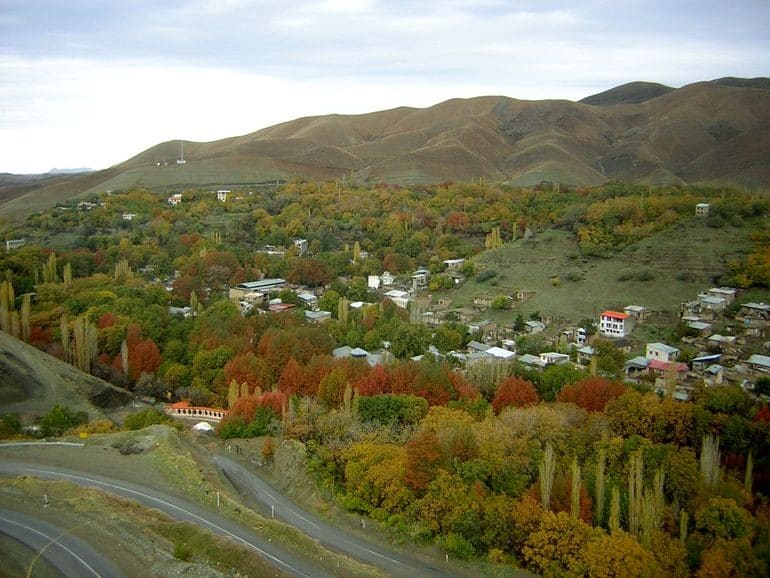
In this part of the Tehran travel guide, let’s discuss Baraghan Village, located in Karaj. This village is considered one of Tehran’s notable attractions. With its two rivers, Sanj and Shahroud, you can explore various local sights, including Barghan Castle, Aghasht Village, Mir Village, Par Barghan Bridge, Ziaratgah-e-Chahel Dokhtar (the Forty Daughters Shrine), and more.
Address: Barghan Village, 13 kilometers from Karaj, Tehran Province, Iran.
Google Maps Location for Barghan Village
Tangeh Vashi (Savashi)

Moving towards Firuzkuh, we find the Tangeh Vashi, known as one of Tehran’s must-see attractions. Its stunning natural beauty and clear waters make it a picturesque spot. The surrounding areas offer a range of activities and sights to explore.
Google Maps Location for Vashi
Taleqan

In this section of the Tehran travel guide, we reach the highland area of Taleqan. This region is a popular destination during spring and summer. As you visit Taleqan, you can enjoy its attractions, including Sarein, Laran Valley, Gorgan, Virgin Protected Area (Varjin), Mount Mehrchal, Hooyij Meadow, Lashgarak, Boragh, Laran Waterfall, Jajrood River, Lavasan Dam, and more.
Address: Taleqan, Alborz Province, Taleghan County, Iran.
Google Maps Location for Taleqan
Lavasan

The name Lavasan may already ring a bell. This highland area around Tehran is renowned for its beauty and natural attractions. You can explore places like Sink Village, Lalan Village, Imam Village, Naran Village, and natural wonders such as Gorooneh Neck, Varjin Protected Area, Mount Mehrchal, Hooyij Meadow, Lar Valley, Lavasan Forest Park, Lavasan Lake, and Lavasan Dam.
Address: Lavasan, Northeast Tehran, Baqeri Highway, Lashgarak Road, Tehran Province, Iran.
Google Maps Location for Lavasan
Fasham

Lastly, on our Tehran travel journey, we reach Fasham, an ancient village with its unique attractions. As you explore Fasham, you can visit attractions like Janestoon Plain, Ahangar Cave, Fasham River, Larmehale Waterfall, Laloon Waterfall, Jajrood River, Lavasan Dam, and enjoy skiing at the Bandesar Ski Resort.
Address: Fasham, Baqeri Highway, Lashgarak Road, Tehran Province, Iran.
Google Maps Location for Fasham
What To Do In Tehran
Tehran, the bustling capital of Iran, offers a diverse range of activities and attractions for travelers. From thrilling ski adventures to exploring historical bazaars, here are some must-visit places and experiences in Tehran:
Tochal Ski Resort
Location: Tochal Peak

Tochal Ski Resort, nestled on the stunning Tochal Peak, promises an exhilarating skiing experience. While it was initially planned to be one of the world’s largest resorts, only two pistes were launched due to historical events. However, the ski piste on the peak is now active and offers fantastic skiing opportunities. This resort has even earned recognition as an ‘International Ski Resort’ by IFS, hosting various international snowboarding competitions.
Darbandsar Ski Resort
Location: Darbandsar Village, 60 km Northeast of Tehran
Darbandsar Ski Resort is a relatively new addition to Tehran’s ski scene. Founded by retired professional skiers and enthusiasts in 1982, it’s a private company-run resort. Located in the picturesque Darbandsar village, it’s a great place to enjoy skiing in a serene environment, away from the city’s hustle and bustle.
Dizin Ski Resort
Location: North of Tehran
Dizin Ski Resort stands as Iran’s most significant and prestigious ski destination. This resort, located north of Tehran, holds the distinction of being the first in Iran to be recognized by FIS as an International Ski Resort, making it a hub for international tournaments. Whether you’re a seasoned skier or a beginner, Dizin offers excellent slopes and stunning views.
Shemshak Ski Resort
Location: Shemshak Village, 57 km Northeast of Tehran
Shemshak Ski Resort, situated in the charming village of Shemshak, offers a unique blend of adventure and relaxation. With two hotels, four restaurants, and altitudes ranging from 2550 m to 3050 m, it caters to both athletes and nature lovers. The picturesque surroundings and well-maintained facilities make it a fantastic winter destination.
Hiking in Darakeh Mountain Route
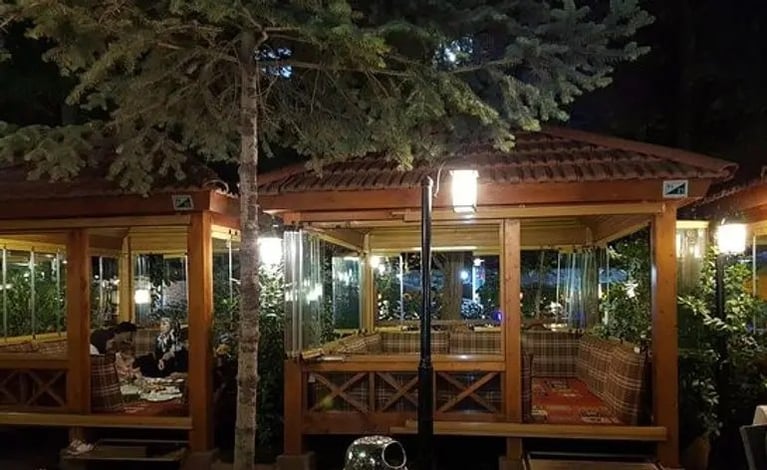
Location: Darakeh
If you’re craving a break from the city, Darakeh Mountain Route provides an excellent opportunity to connect with nature. The hiking trail starts with a scenic walk alongside a stream, flanked by open-air restaurants. To reach Darakeh, consider taking a taxi or minibus from Tajrish Square. It’s a perfect escape for those who love the outdoors.
Wander Around Tehran’s Massive Bazaar
Location: South Tehran (Metro: Panzdah-e-khordad)
Don’t miss the chance to explore Tehran’s Massive Bazaar, a historical and cultural treasure trove. The main entrance on 15 Khordad Ave leads you into a labyrinth of stalls and shops that were once the heart of Iran’s commodity markets. It’s not only a shopping destination but also a glimpse into the city’s rich history and heritage.
Best Parks and Grand Green Spaces in Tehran
Tehran, a city with a rich history dating back to ancient times, is renowned for its lush gardens and parks. Today, these expansive green spaces have transformed into modern and welcoming parks, offering a peaceful escape from the hustle and bustle of daily life. Visitors can stroll through these verdant havens, enjoy the laughter of children at play, and savor the melodies of birdsong. In this guide, we’ll introduce you to the best parks in Tehran, where you can immerse yourself in nature and tranquility.
Park-e Mellat (Mellat Park)

Park-e Mellat, one of Tehran’s most beloved parks, has a rich history dating back to 1966. It is adorned with sculptures of prominent Iranian poets and offers a range of amenities. The park is divided into various sections, making it ideal for picnics, leisurely walks, group games, and jogging.
How to Get to Park-e Mellat:
The easiest and most direct way to reach Park-e Mellat is by using the BRT buses to Tajrish and then the Park-e Mellat buses, which will drop you right in front of the park.
Address: Tehran, Valiasr St., above Niyayesh Expressway
Park-e Saei (Saei Park)

Park-e Saei, located in the heart of Tehran, is an easily accessible and captivating park. Its construction began in 1963, and it covers an impressive 12 hectares of green space. The park features various attractions, including designated areas for wildlife, a wide variety of rare plants, a children’s playground, a skating rink, a prayer room, public restrooms, numerous fountains, pergolas, an amphitheater, animal sculptures, a cultural center, and a library.
How to Get There:
Similar to Park-e Mellat, you can take BRT buses to Tajrish and walk to Park-e Saei from the Abshar Station, or you can take a taxi from anywhere along Valiasr Street to reach the park easily.
Address: Tehran, Valiasr St., above Beheshti Intersection
Park-e Laleh (Laleh Park)
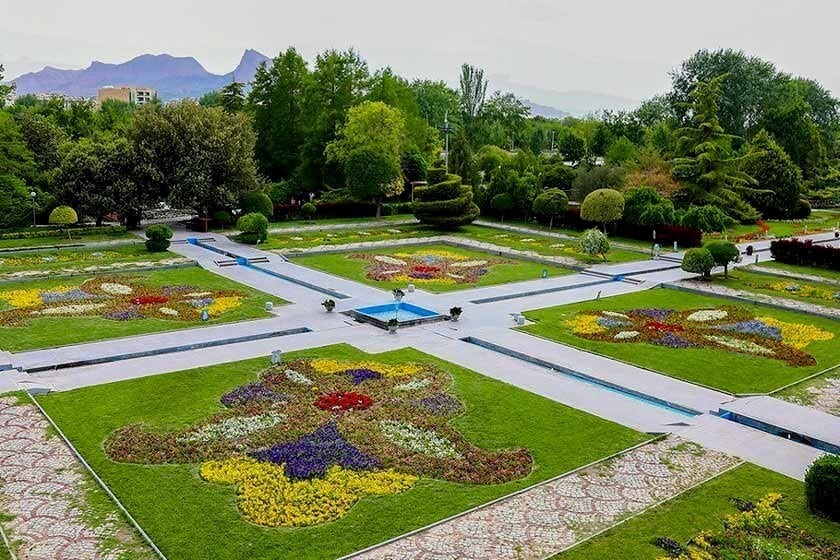
Park-e Laleh, not only one of Tehran’s finest parks but also among Iran’s largest, is situated in the city center. Historically, it was used for military drills. Covering over 33 hectares, the park was established in 1966, initially known as Jalaliyeh Horse Racing Field.
The park houses a magnificent statue of the Iranian polymath and poet, Omar Khayyam, which was designed and crafted in Italy. Adjacent to Park-e Laleh, you’ll find the Tehran Museum of Contemporary Art, a must-visit attraction.
The park offers an array of facilities, including various fountains, a prayer room, volleyball and basketball courts, a children’s playground, a library, a sports area, walking paths, chess tables, public restrooms, and the Laleh Entrepreneurship Bazaar, among other features.
How to Get to Park-e Laleh
To reach Park-e Laleh, you can use the metro system and disembark at either the Jihad or Enqelab Square stations. From there, you can walk or take a taxi to the park.
Address: Tehran, North Karegar St., at the intersection of Keshavarz Blvd.
Park-e Honarmandan

If you have a passion for music, poetry, and handicrafts, and consider yourself an art enthusiast, we highly recommend including a visit to Park-e Honarmandan (Artists Park) in Tehran on your travel itinerary. This park stands as one of Tehran’s oldest and finest, offering more than just scenic walks in nature. Here, you can witness various street performances by artists and musicians, support local artisans selling handmade crafts and jewelry, and immerse yourself in a vibrant cultural atmosphere.
In Park-e Honarmandan, you’ll find a plethora of facilities to enjoy, including artificial sports grounds, various art installations, children’s play areas, the House of Artists, cafes and restaurants, an art store, galleries, fountains, basketball courts, sports clubs, and many more.
How to Get to Park-e Honarmandan:
You can reach this park through various routes, but the most convenient ones are from Valiasr Square or Haft-e Tir Square. Use the metro to reach one of these squares and then take a taxi to Iranshahr Street, where you’ll find Park-e Honarmandan in the middle of the street.
Address: Tehran, Taleghani Street, Iranshahr Street.
Park-e Ab-o-Atash (Water and Fire Park)
In the first installment of our Tehran Park series, we introduce you to Park-e Ab-o-Atash, also known as the Water and Fire Park. This park, inaugurated in 2009, is a testament to modern Tehran’s architectural innovation. Designed by Evan Kaspian Pardis, it has become one of Tehran’s most beautiful parks, despite its relatively young age. The park’s name is inspired by the presence of four fire towers among its mesmerizing water fountains.
One of its major attractions is the Nature Bridge, connecting Park-e Ab-o-Atash to Taleghani Park, providing a scenic walkway for visitors.
Park-e Ab-o-Atash offers a variety of recreational areas and facilities, including amphitheaters, diverse fountains, the Nature Bridge, various restaurants and food courts, a skating rink, fire towers, steel curtains, a sea lantern, a flower market, a square for local celebrities, a designated bike path, a playground, a planetarium, an artificial Lake Khazar, and much more.
How to Get to Park-e Ab-o-Atash
To reach the park by metro, you can disembark at the Haghani Metro Station and then walk to the park. Alternatively, you can use buses near the Vanak Square or take a taxi to reach this captivating destination.
Address: Tehran, Beginning of Haghani Highway, After Chahar Rah-e Jahan Koodak.
Park-e Jamshidieh

Park-e Jamshidieh, one of Tehran’s oldest and most beautiful parks, boasts a rich history dating back to ancient times. This park was originally a vast garden belonging to a nobleman named Jamshid al-Doleh. Over the years, it has been transformed into a serene and scenic park that attracts both locals and tourists.
Park-e Jamshidieh is home to various recreational areas and amenities, including different fountains, a stone waterfall, a stone bridge, stone statues, Ferdowsi Garden, seasonal exhibitions, pergolas, restrooms, diverse restaurants and cafes, a designated area for walking and cycling, a children’s playground, a skating rink, and even a sea-themed lantern.
How to Get to Park-e Jamshidieh
The best way to reach this park is to make your way to Tajrish Square and then take a taxi to Park-e Jamshidieh.
Address: Tehran, Shahid Bahonar Street, Shahid Omidoavar Street.
Bagh-e Irani (Iranian Garden)

If you yearn for the old Tehran and want to experience the ambiance of bygone eras, Bagh-e Irani (Iranian Garden) and the surrounding alleys are the perfect places to wander and immerse yourself in the nostalgia of Tehran’s past.
Bagh-e Irani is a charming and welcoming garden located in the heart of one of Tehran’s most historic neighborhoods. It is open day and night, providing a delightful retreat for visitors of all ages.
How to Get to Bagh-e Irani:
You can reach this delightful garden by using various modes of transportation. First, make your way to Vanak Square. The nearest metro stations to Vanak Square are Imam Khomeini Metro Station and Haghani Metro Station. From there, you can take a taxi to Bagh-e Irani.
Address: Deh Vanak, Sheikh Bahai North Street, 20 meters before Peyrovan Street.
Tehran Souvenirs
When visiting Tehran, you might want to consider taking back some local souvenirs as mementos of your trip. Here’s a list of popular Tehran souvenirs to choose from:
- Jajim: A traditional Iranian textile often used as a decorative piece or rug.
- Ghalamkar (Persian Block Printing): Colorful fabrics and textiles adorned with intricate hand-printed designs.
- Leather Painting: Exquisite paintings done on leather, showcasing Persian artistry.
- Nan-e Goloj Firuzkuh: Delightful local bread known for its unique taste.
- Pottery: Handcrafted ceramic and pottery items, including tiles, dishes, and decorative pieces.
- Shahriar Raisins (Keshmesh Shahriar): Delicious local raisins, perfect for snacking or gifting.
- Batik Prints (Chap Baatik): Fabric with beautiful batik designs, a form of wax-resist dyeing.
- Verni Weaving (Verni Bafi): Traditional weaving techniques used to create intricate patterns on fabrics.
- Reed Mats (Sohan-e Rey): Woven reed mats, great for home decor or as prayer rugs.
- Alucheh and Darband Lavashak: Tasty local sweets, including cookies (Alucheh) and fruit leather (Lavashak).
- Tehran Sohan: A special type of Iranian brittle toffee, a sweet delight for your taste buds.
Hotels in Tehran
If you’re looking for a comfortable place to stay during your visit to Tehran, we’ve compiled a list of the best accommodation options for you. You can easily explore and book your stay through the OrientTrips website, and receive your hotel voucher instantly.
Here are some top choices for accommodation in Tehran.
Top 5 Star Hotels in Tehran
Espinas Palace Hotel
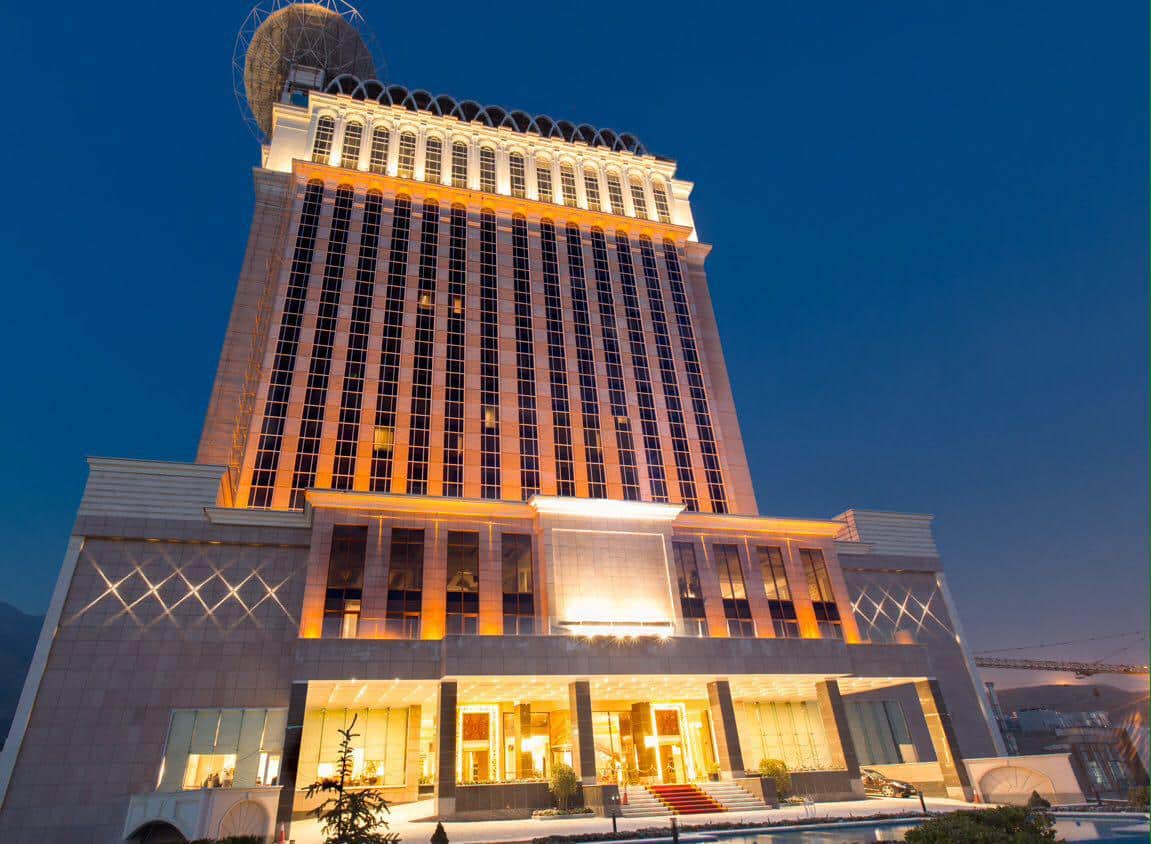
Espinas Palace Hotel is an epitome of luxury and elegance. Located in the heart of Tehran, the hotel offers panoramic views of the city’s skyline and the Alborz Mountains. With top-notch amenities like an indoor pool, a world-class spa, and a variety of fine dining options, it’s an ideal choice for both business and leisure travelers.
- Address: No. 33, 56th Alley, Alvand St, Tehran, Iran
- View Espinas Palace Hotel on Google Maps
Parsian Azadi Hotel
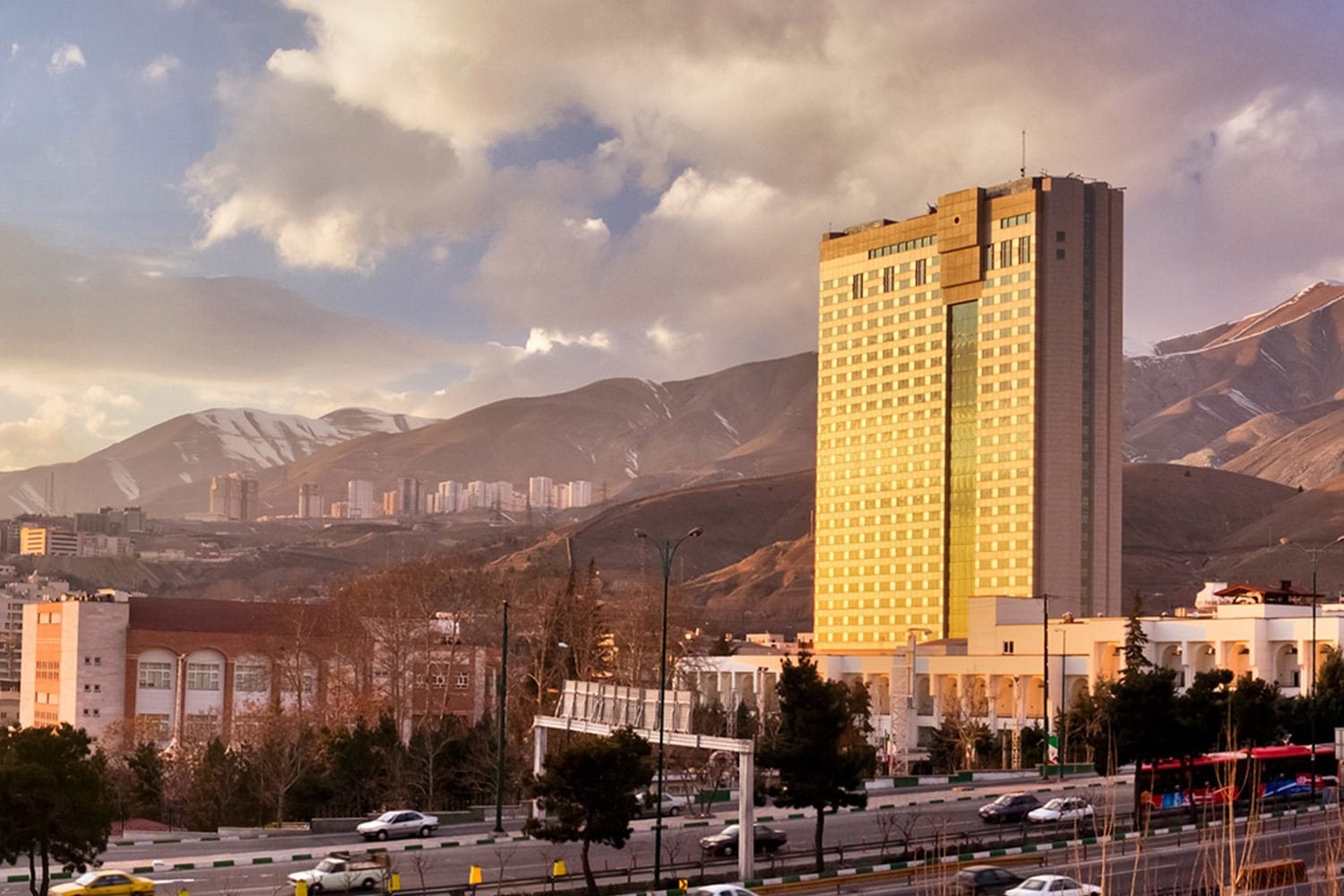
Parsian Azadi Hotel is renowned for its perfect blend of traditional Iranian hospitality and modern luxury. With its proximity to the International Exhibition Center, it’s a popular choice among business travelers. The hotel offers a unique gastronomic experience with its range of restaurants serving both local and international cuisines.
- Address: Evin Intersection, Chamran Highway, Tehran, Iran
- View Parsian Azadi Hotel on Google Maps
Tehran Homa Hotel

Tehran Homa Hotel provides a serene atmosphere right in the bustling city of Tehran. Known for its excellent service and sophisticated ambiance, the hotel has various amenities like an outdoor swimming pool, a sauna, and multiple fine dining options.
- Address: No. 51, Shahid Khodami St, Tehran, Iran
- View Tehran Homa Hotel on Google Maps
Remis Airport Hotel Tehran
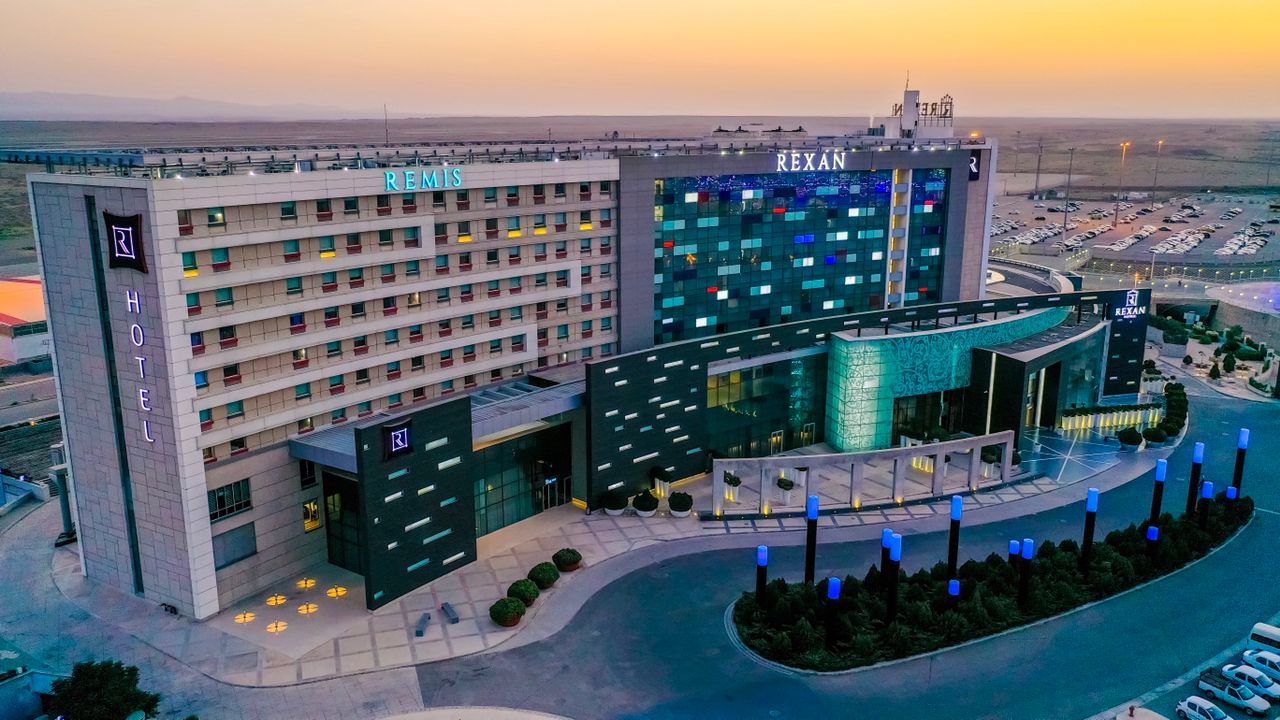
Conveniently located opposite Tehran’s Imam Khomeini International Airport, Remis Tehran offers a convenient and luxurious stay for international travelers. With its modern design, fitness center, and diverse culinary offerings, it sets the standard for airport hotels.
- Address: Opposite Terminal 1, IKIA, Tehran, Iran
- View Remis Hotel on Google Maps
Esteghlal Hotel, Tehran

Esteghlal Hotel is one of Tehran’s oldest and most famous luxury hotels. Located near Tehran’s primary business districts, it’s a popular choice among corporate travelers. The hotel features a variety of restaurants serving local and international cuisines, as well as amenities like a fitness center and a spa for relaxation.
- Address: Crossroad of Chamran Highway & Valiasr St, Tehran, Iran
- View Esteghlal Hotel on Google Maps
Parsian Englebal Hotel

Parsian Englebal Hotel is located near the city’s main attractions and offers a blend of modern and traditional designs. With its elegant ambiance, the hotel is well-suited for both leisure and business travelers. Its amenities include a swimming pool, a sauna, and several dining options offering delicious Persian cuisine.
- Address: 32 Baharestan Square, Tehran, Iran
- View Parsian Englebal Hotel on Google Maps
Wisteria Hotel in Tehran
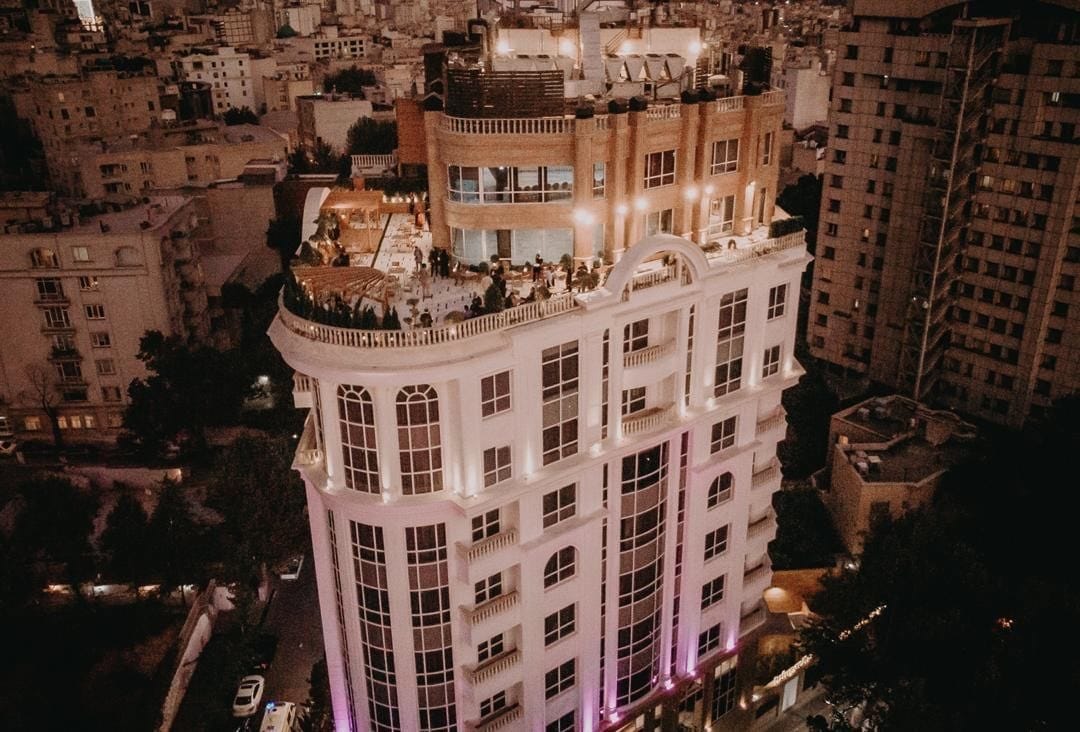
Wisteria Hotel is a unique luxury hotel located in the northern part of Tehran. Situated near the beautiful Darband area, it offers stunning views of the Alborz Mountains. The hotel is known for its tranquil setting and top-notch services like spa treatments, an indoor swimming pool, and fine dining options.
- Address: Darband Street, Tehran, Iran
- View Wisteria Hotel on Google Maps
Top 4-Star Hotels in Tehran
Ferdowsi International Grand Hotel

Ferdowsi International Grand Hotel is situated in the heart of Tehran, offering easy access to shopping centers and historical sites. With well-furnished rooms and facilities like a swimming pool, gym, and several dining options, it provides a comfortable stay for both leisure and business travelers.
- Address: No.24, Kooshk Mesri St., Ferdowsi Ave., Tehran, Iran
- View Ferdowsi International Grand Hotel on Google Maps
Howeyzeh Hotel

Howeyzeh Hotel is a popular choice among travelers due to its central location and affordability. The hotel offers amenities such as a fitness center, free WiFi, and several in-house restaurants that serve both Iranian and international cuisines.
- Address: Nejatollahi St, Tehran, Iran
- View Howeyzeh Hotel on Google Maps
Tehran Grand Hotel

Tehran Grand Hotel is a well-equipped 4-star hotel that offers all the modern amenities a traveler might need. Located near Tehran’s business district, it features a business center, gym, and several restaurants, making it ideal for corporate travelers.
- Address: Valiasr Square, Tehran, Iran
- View Tehran Grand Hotel on Google Maps
Niloo Hotel

Niloo Hotel is located in a quiet neighborhood and provides a cozy, homely ambiance. The hotel offers amenities like a fitness center, a café, and an in-house restaurant that serves delectable Persian cuisine.
- Address: Ostad Nejatollahi St, Tehran, Iran
- View Niloo Hotel on Google Maps
Parsian Kowsar Hotel

Kowsar Hotel offers a blend of Iranian hospitality and modern amenities. Located near Valiasr Street, it is conveniently situated for exploring the city. The hotel provides comfortable rooms and several dining options, making it a great choice for families and business travelers alike.
- Address: Valiasr St, Tehran, Iran
- View Kowsar Hotel on Google Maps
Final Word
In conclusion, Tehran stands as a dynamic city blending tradition with modernity, offering travelers an enriching cultural experience. From the bustling bazaars to the serene parks, majestic palaces, and innovative museums, Tehran captivates visitors with its diversity. The city serves as an ideal starting point for exploring Iran’s rich history, art, and cuisine. Planning your journey to Tehran becomes effortless with SURFIRAN, where you can discover tailor-made tours that cater to your interests and preferences. Moreover, for a seamless travel experience, OrientTrips offers comprehensive services including visa assistance, travel insurance, SIM cards, and more, ensuring a memorable and hassle-free visit to Tehran. Whether you seek adventure, cultural immersion, or culinary delights, Tehran promises an unforgettable journey into the heart of Iran.
Read More


